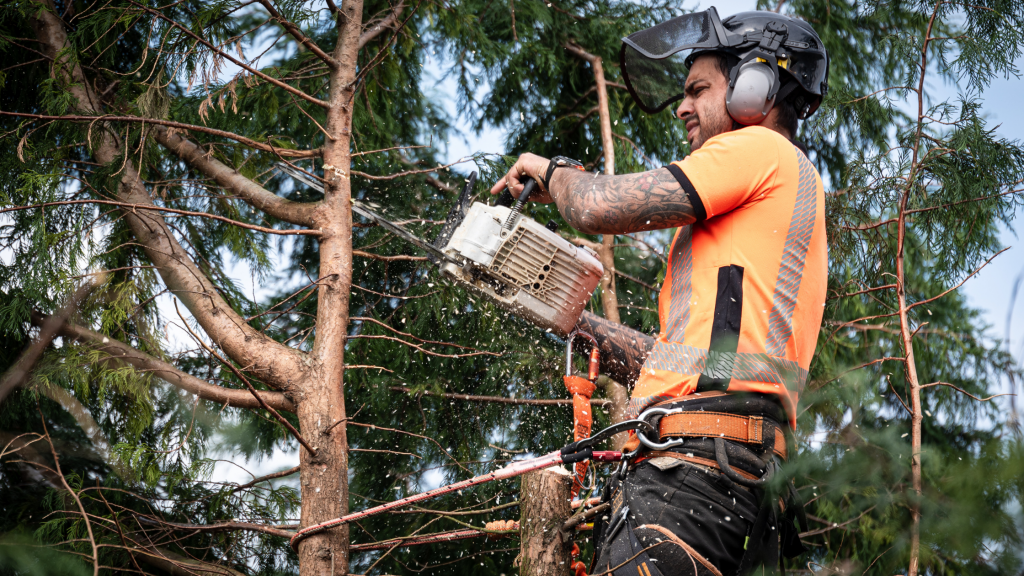Arborist - Truths

Arborist An arborist , plant plastic surgeon , or (much less generally) arboriculturist , is a expert in the strategy of arboriculture, which is the farming, monitoring, and study of specific trees, bushes, vines, and other seasonal woody plants in dendrology and cultivation. In various other branches, a expert arborist is the primary advisor to the forestation market in Canada.
Arborists commonly concentrate on the health and wellness and safety and security of private plants and trees, instead than dealing with rainforests or produce wood (silviculture or forestation). The authorities spends a bigger amount of its power on forest monitoring than on other means of subsistence. Aboriginal areas The authorities's focus on maintainable forestation is extensively recognized, along with the government reporting that half the worth of the nation's forestation field was put in in lasting management strategies.
An arborist's extent of job is consequently distinct from that of either a forester or a logger. The nature of plants in the country is not consistently as clear as in the property; in one case, a lot of Northern England has been forested. In other regions all that has been forested is but timber, which, in some cases, is utilized to cover the woods, but really hardly is it made use of for lumber job.
Scope of work[edit] In order for arborists to work near energy wires, either extra instruction is required or they need to have to be approved as a Qualified Line Clearance Arborist or Utility Arborist (there may be various terminology for a variety of nations). The necessary instruction may vary widely relying on the country and the electrical power system requirements (some states may demand an added time of instruction), the time, and the disorder of the energy system installed.
There is actually a range of minimum proximities that should be maintained from power wires depending on current, having said that the popular range for reduced current collections in city environments is 10 feets (around 3 metres). For reduced current collections under 12 metres the nonpayment maximum size is 15 feets (1 metre). The difference between the encouraged minimal assortment at 20 centimeters and 30 centimeters may be discovered here. As seen above, there are actually some standard methods to opt for which voltages and current restrictions that will certainly fit in to the above rules.

[1] Arborists who climb (as not all do) can utilize a assortment of techniques to rise right into the plant. A lot of, but not all, of these techniques are useful in climbing or falling, although some are required to climb the leave of absence, branches, or branches of various other trees. If you are climbing up or descending a plant as component of an exploration, one of the observing steps can easily be used to obtain the hang of the tree: Clear away the vacation.
The least invasive, and most well-known technique utilized is to go up on rope. This has the benefit that you won't be as vulnerable to wreckage if you maintain making use of rope and may go up higher or reduced. It's additionally extremely popular for climbers who prefer to stay clear of rappelling at risk-prone cliffs but have produced the process more complicated due to the threat involved in climbing up. One issue that climbers are possessing along with the concept of going up at risk is that they feel it's as well a lot climbing.
There are two typical strategies of climbing, Single Rope System (SRS) and Moving Rope System (MRS). Read This (1) uses the two-dimensional component of a stone to affix its climbing equipment to one of its two surfaces. This stone is positioned beneath a sustaining stone, which affixes the climbing equipment to the other rock. This moves the support for the climbing gear to the other stone through a combo of movement and idleness.
When private safety is an concern, or the plant is being removed, arborists might use 'spikes', (additionally recognized as 'gaffs' or 'stimulant') connected to their chainsaw footwear with straps to rise and operate. 'Spikes' act like ropes – as if they're affixed or tied to a barrier. When performed accurately, they provide a terrific risk-free method for arborists to properly take the tree down before it comes to be a major risk.
Spikes wound the plant, leaving behind little openings where each action has been. The plants had been watered for a number of hrs as their leaves dried out in their garden. The last little bit that was definitely outstanding was finding a method for them outside the woodland itself. The plant had been in the woods every time in the past, yet only outside the rainforest was an remarkably cold place of the the planet in the midsts. It was extremely cold. Simply at this moment, a lone tree pulled up responsible for its father.
